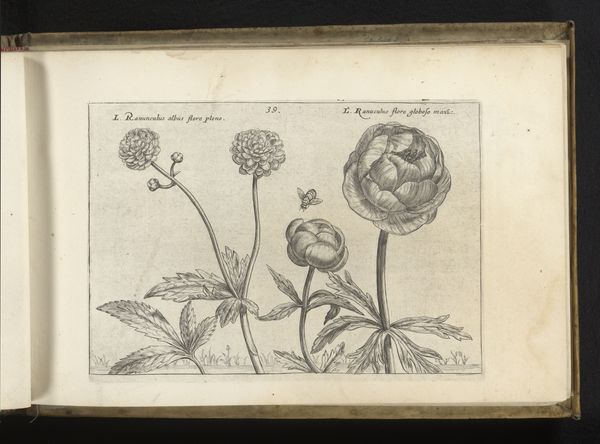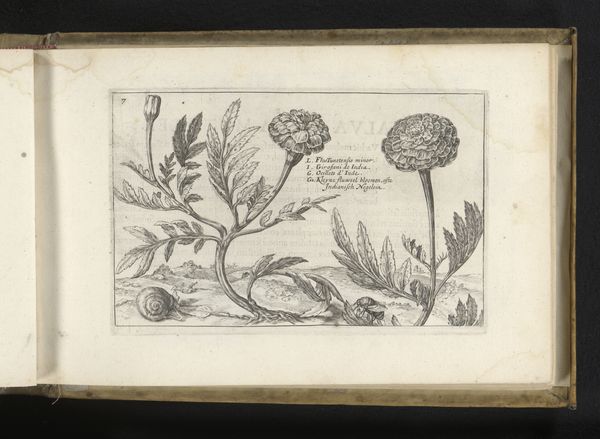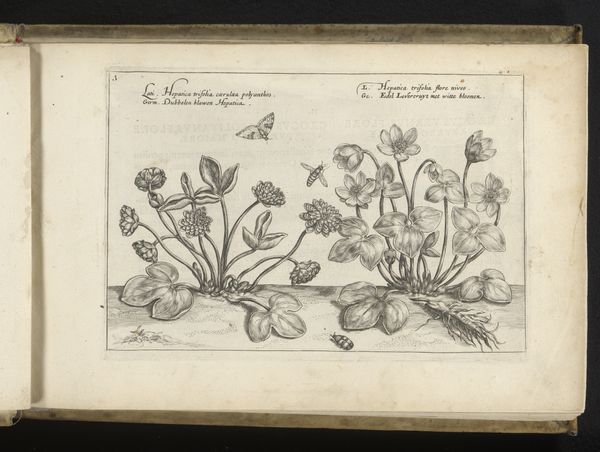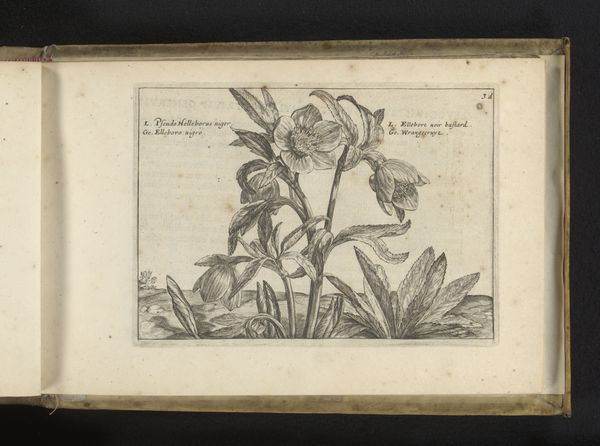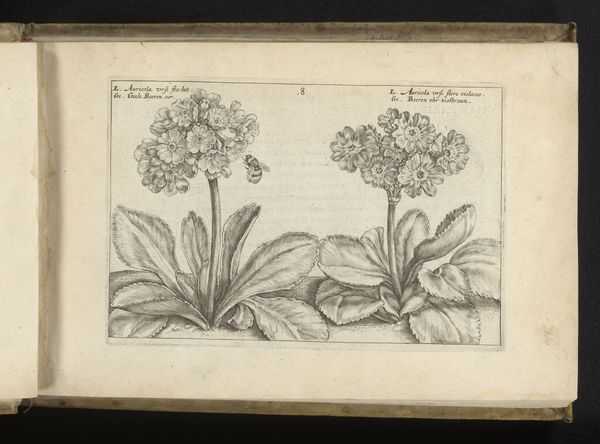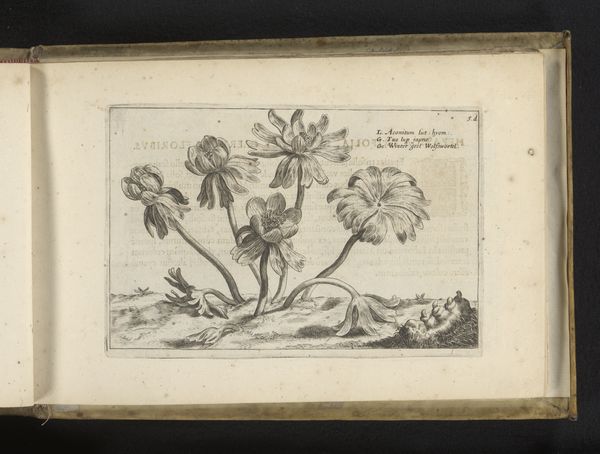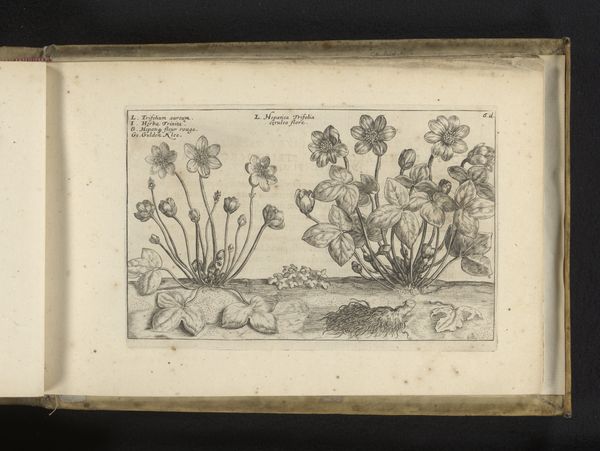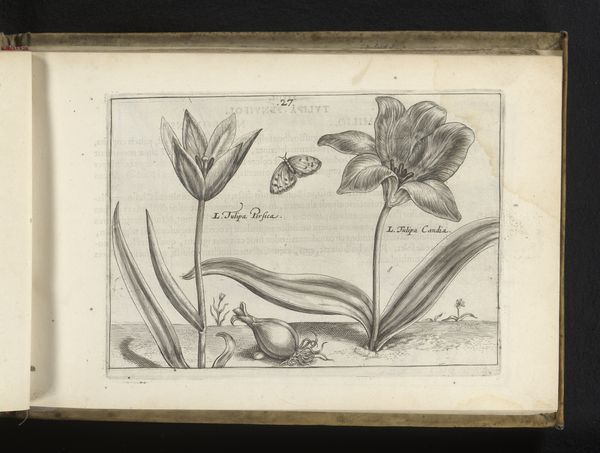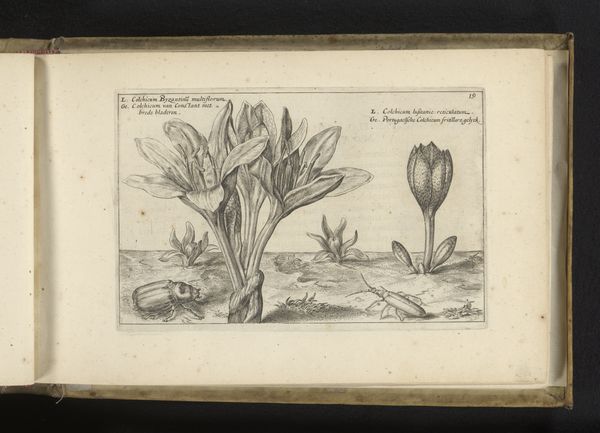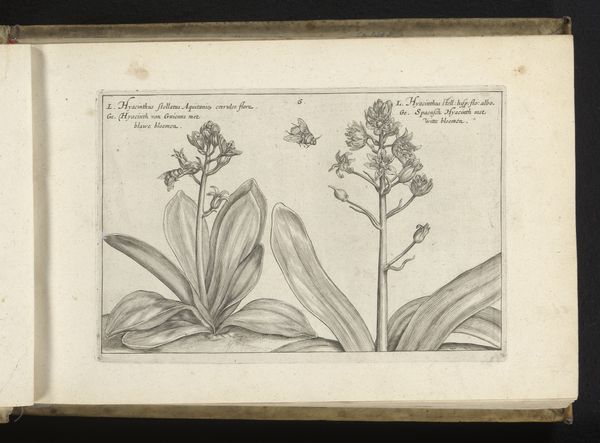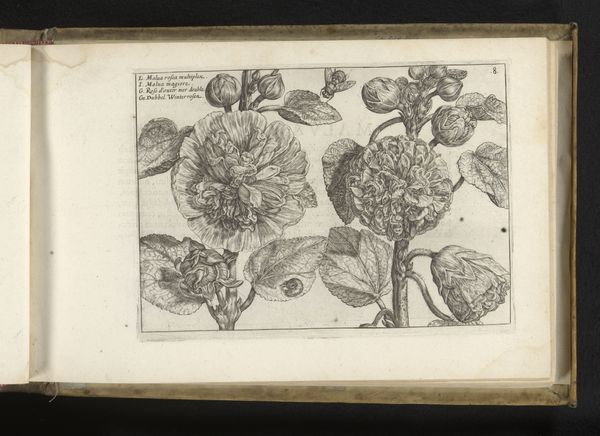
drawing, print, paper, ink, engraving
#
drawing
# print
#
flower
#
paper
#
ink
#
northern-renaissance
#
engraving
Dimensions: height 137 mm, width 207 mm
Copyright: Rijks Museum: Open Domain
Curator: This print, "Kerstroos," or Christmas Rose, was created in 1617 by Crispijn van de Passe the Younger, it’s currently held at the Rijksmuseum. It combines engraving and ink on paper, typical of the Northern Renaissance style. Editor: I must say, even in simple black and white, it holds such delicate beauty. There’s a sort of restrained elegance that draws me in, makes me wonder if it hints towards something else, a story, perhaps? Curator: Well, flower imagery in the 17th century often conveyed layers of symbolic meanings. We can dig into the ways these prints were disseminated via print culture—albums, gift books, broadsides—each impacting the cultural resonance of a specific image. Editor: Ah, so it’s not just about botanical accuracy, then? More than just rendering nature, there’s intention. Are these winter roses symbolic? Do you think they were created for a particular purpose, to reflect something of the season beyond decoration? Curator: It’s likely that the flower carries symbolic weight, but how accessible would such meanings be? Considering the rise of botanical studies alongside printmaking, the work likely serves multiple functions: artistic expression, scientific documentation, and allegorical reflection. Editor: That makes perfect sense to me! Thinking about how they captured such nuance with what must have been quite limited tools at the time… incredible! I mean, each line seems so precisely placed. I suppose for me it’s also seeing something so incredibly temporary—a blooming flower—rendered so permanent, existing hundreds of years later. I think that tension is so compelling, don't you think? Curator: Absolutely! And perhaps we can also see how seemingly simple images like this one actually helped shape botanical sciences and visual communication, and continue to challenge our understanding of art's role in society. It encourages one to consider not only how things are created, but *why*. Editor: Yes! The questions we carry. Now, looking back at "Kerstroos," it has a renewed quality of depth for me. Something new is illuminated in considering its potential role within society and even botany at large.
Comments
No comments
Be the first to comment and join the conversation on the ultimate creative platform.
